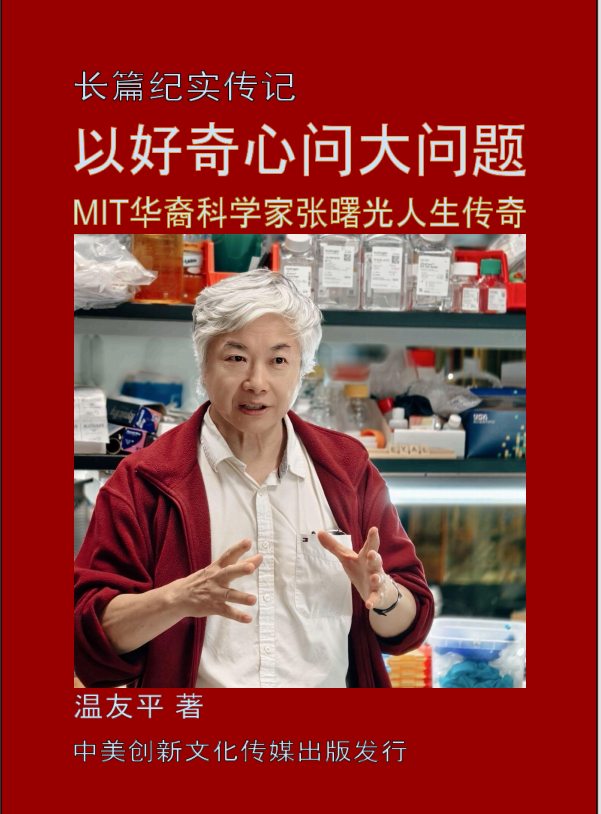“令人心碎”:新报告发现,225,000 名马萨诸塞州学生就读于不达标准的种族隔离学校

【中美创新时报2024 年 6 月 10 日编译讯】(记者温友平编译)根据马萨诸塞州监督委员会的一份新报告,马萨诸塞州有超过 225,000 名学生就读于种族隔离的公立学校,大多数毕业率和标准化考试成绩都很低,因为州教育领导人几十年来一直未能遵守要求他们促进融合的法律。《波士顿环球报》记者詹姆斯·瓦兹尼斯(James Vaznis)对此作了下述报道。
根据种族不平衡咨询委员会的报告“马萨诸塞州学校的种族隔离”,该州一些最边缘化的学生受到该州缺乏行动的影响最为严重:65% 的不达标准的种族隔离学校的学生是拉丁裔,四分之一是黑人。这些学生通常就读于距离高绩效学校不远的劣等学校。
几乎所有学生都是白人的学校的毕业率为 93%,而有色人种学生占入学人数 90% 以上的学校的毕业率为 72%。在三年级英语语言艺术 MCAS 考试中,几乎所有学生都是白人的学校有 54% 的学生达到或超过了预期,而几乎所有学生都是有色人种的学校只有 22% 的考生达到或超过了预期。
“这令人心碎,”波士顿大学惠洛克教育与人类发展学院高级讲师、顾问委员会主席劳尔·费尔南德斯(Raul Fernandez )说。“作为一个委员会,我们谈到了这样一种观点,即许多人已经对这个问题麻木了,人们认为这些差距将会存在,但现实是它们不必存在。”
这份报告的发布正值 6 月 21 日波士顿法院下令废除种族隔离 50 周年纪念日临近之际。联邦法官 W. Arthur Garrity Jr. 认为,波士顿学校委员会“故意实施系统性种族隔离计划”,违反了美国宪法。Garrity 的命令是在一系列州法院裁决和该州根据该州 1965 年的种族不平衡法案迫使波士顿公立学校废除种族隔离的努力之后发布的。
新报告包括 18 项减少种族隔离和消除绩效差距的建议,包括加强州对学校废除种族隔离努力的监督;优先考虑能够增加学校融合的学校建设项目;扩大 Metco,这是一项自愿的学校融合计划,使波士顿和斯普林菲尔德的学生能够就读郊区学校;并确保各学区在关闭、建造或搬迁学校时考虑种族平衡。
费尔南德斯表示,第一步是遵循现有的州法律来解决这些问题,并指出“在这方面,各方面都完全失职了。”
根据州法律,州小学和中学教育委员会应该通知种族不平衡的学校学区,并提供技术和财政援助,帮助他们解决这些问题。反过来,学区也必须通知这些学校学生的家长,他们有权转学到学区内的另一所学校。
但报告称,小学和中学教育部在委员会准备报告时承认,他们找不到过去二十年发给学区的一封信,也无法提供任何数据表明是否有学生行使了转学的权利。
州教育部长帕特里克·塔特威勒表示,希利-德里斯科尔政府仍专注于解决这些问题。
他在一份声明中表示:“希利-德里斯科尔政府致力于确保所有学生在包容性的学习环境中接受高质量的教育。” “我们的政府仍然专注于应对这些挑战。”
报告称,如果一所学校的白人或非白人学生占 71% 至 89%,则该学校被标记为种族隔离学校,如果 90% 或以上的学生是白人或非白人,则该学校被标记为高度种族隔离学校。
拉丁裔学生是除白人学生之外唯一一个在学校占据 90% 或以上席位的群体,全州共有 34 所。这些学校中有四分之三位于劳伦斯;其余的位于波士顿、切尔西和霍利奥克。有色人种学生占所有这些学区的大多数。劳伦斯和霍利奥克学区也处于州政府接管之下,而波士顿则在州政府实施的学区改善计划下工作。
自 1965 年以来,马萨诸塞州学区根据州法律被要求消除和防止其学校中的种族不平衡现象,特别是在绘制或更改决定哪些学生可以入学的学校的地理边界、确定年级和选择新学校地点时。
但在 1990 年代和 2000 年代初期,全国范围内的一系列法院裁决和法律挑战造成了模糊的法律环境,使许多学校官员怀疑他们是否可以将种族作为学校作业的一个因素,包括波士顿在内的许多学校都放弃了种族分配。
随后,在学校中实现正确种族平衡的努力在城市地区失败了。根据 2018 年《波士顿环球报》的评论,随着波士顿公立学校改变学校分配政策以允许更多学生就读离家较近的学校,该校的种族隔离现象显著增加。更广泛地说,根据马萨诸塞大学研究人员 2020 年的一份报告,马萨诸塞州城市地区种族隔离严重的学校数量也有所增加。
马萨诸塞州学校种族隔离现象日益严重,与此同时,该州学生总体人口变得更加多样化,有色人种学生占公立学校 914,959 名学生的近一半。这反过来又有助于使更多郊区学校多样化。
然而,根据种族不平衡咨询委员会的报告,亚裔学生在种族多元化学校中的比例远远高于黑人或拉丁裔学生。
根据美国教育部发布的《学校多样性状况报告》,研究表明,种族隔离学校的黑人和拉丁裔学生获得的资源和高质量学习环境往往比其他地方的同龄人更少。但麻省理工学院蓝图实验室在 2022 年进行的一项研究发现,乘坐校车到社区外学校上学的波士顿学生并没有在学业上获得任何好处。
与波士顿家庭合作的非营利组织 SchoolFacts Boston 家庭咨询委员会主任 Vernée Wilkinson 表示,家长们长期以来一直批评波士顿公立学校缺乏高质量学校,而且这些学校往往人满为患,如果家长想将孩子转出表现不佳的种族隔离学校,他们没有可行的选择。
她说,即使是像 Metco 这样的选择也可能有局限性,因为学生并不总是感到被接受或得到文化上的肯定。
“最初,50 年前,当黑人社区为教育平等而战时,他们不一定是在为废除种族隔离而战,”她说。 “他们在社区中争取资源,在那里他们已经被接受和肯定。”
波士顿公立学校的一位发言人表示,该学区正在审查这份报告,目前无法发表评论。
但近年来,波士顿公立学校已采取措施,成功提高考试学校的多样性,并努力降低被分配到完全独立教室的黑人残疾男孩的比例。
题图:一份新报告发现马萨诸塞州公立学校普遍存在种族隔离。JESSICA RINALDI/GLOBE STAFF
附原英文报道:
‘It’s heartbreaking’: 225,000 Mass. students attend substandard segregated schools, new report finds
By James Vaznis Globe Staff,Updated June 10, 2024
More than 225,000 students across Massachusetts attend segregated public schools, mostly with low graduation rates and standardized test scores, because state education leaders for decades have failed to comply with laws requiring them to foster integration, according to a new report by a state oversight committee.
Some of the state’s most marginalized students have been most severely affected by the state’s lack of action: 65 percent of the students in the substandard segregated schools are Latino and a quarter are Black, according to the report, “Racial Segregation in Massachusetts Schools” by the Racial Imbalance Advisory Council. Often the students are attending inferior schools within short distances of higher-performing schools.
The graduation rate at schools where almost all students are white was 93 percent, while the rate at schools where students of color compose more than 90 percent of enrollment was 72 percent. On the third-grade English Language Arts MCAS exam, 54 percent of students at schools with nearly all white students met or exceeded expectations, compared to 22 percent of test-takers at schools with almost all students of color.
“It’s heartbreaking,” said Raul Fernandez, a senior lecturer at Boston University Wheelock College of Education & Human Development who chairs the advisory council. “As a council, we talked about the idea that many people are already numb to this as an issue and the expectation is that these gaps are going to exist, but the reality is they don’t have to.”
The release of the report comes as the 50th anniversary of court-ordered desegregation in Boston nears on June 21. In his opinion, federal Judge W. Arthur Garrity Jr. found the Boston School Committee had “knowingly carried out a systematic program of segregation” in violation of the US Constitution. Garrity’s order followed a series of state court rulings and the state’s own efforts to force Boston Public Schools to desegregate under the state’s 1965 Racial Imbalance Act.
The new report includes 18 recommendations to decrease segregation and eliminate performance gaps, including greater state oversight over school desegregation efforts; prioritizing school construction projects that would increase school integration; expanding Metco, a voluntary school integration program that enable Boston and Springfield students to attend suburban schools; and making sure districts consider racial balancing when closing, building, or moving schools.
The first step, Fernandez said, is following existing state laws to address the problems, noting, “There’s been a complete dereliction of duty across the board on this.”
Under state law, the state Board of Elementary and Secondary Education is supposed to notify districts with racially imbalanced schools and offer technical and financial assistance to help them remedy the problems. Districts, in turn, are required to notify parents of students at these schools about their right to transfer to another school in the district.
But the Department of Elementary and Secondary Education conceded to the council as it was preparing its report that they could not find a single letter sent out to districts over the last two decades and was not able to produce any data indicating whether any students were exercising their right to transfer to another school, according to the report.
State Education Secretary Patrick Tutwiler said the Healey-Driscoll administration remains focused on addressing these issues.
“The Healey-Driscoll administration is committed to ensuring that all students receive a high-quality education in inclusive learning environments,” he said in a statement. “Our administration remains focused on addressing these challenges.”
The report labeled a school as segregated if white or non-white students composed between 71 percent and 89 percent, and as intensely segregated if 90 percent or more of students were white or non-white.
Latino students were the only group other than white students to hold 90 percent or more of seats at a school, 34 in total statewide. Three quarters of those schools were in Lawrence; the rest were in Boston, Chelsea, and Holyoke. Students of color make up the majority of enrollment in all those districts. The Lawrence and Holyoke districts also are under state receivership, while Boston is working under a state-imposed district improvement plan.
Since 1965, Massachusetts school districts have been required under state law to eliminate and prevent racial imbalances in its schools, especially when drawing or altering geographic boundaries around schools that determine which students can attend, establishing grade levels, and selecting new school sites.
But a series of court rulings and legal challenges nationwide in the 1990s and early 2000s created a murky legal landscape that left many school officials wondering whether they could use race as a factor at all in school assignments, and many, including Boston, abandoned them.
Efforts to strike the right racial balances in schools subsequently lost ground in urban districts. Segregation in Boston Public Schools has increased significantly as the district changed school assignment policies to allow more students to attend schools close to home, according to a 2018 Globe review. More broadly, the number of intensely segregated schools in urban districts in Massachusetts also has increased, according to a 2020 report by University of Massachusetts researchers.
The growing intensity of segregated schools in Massachusetts comes as the state’s overall population of students has grown more diverse, with students of color accounting for almost half of the 914,959 students enrolled in public schools. That, in turn, has helped to diversify more suburban schools.
However, Asian students are far more likely to be represented at racially diverse schools than Black or Latino students, according to the Racial Imbalance Advisory Council report.
Research has shown that Black and Latino students in racially isolated schools often have access to fewer resources and fewer high-quality learning environments than their peers elsewhere, according to a US Department of Education’s State of School Diversity Report. But a 2022 study conducted by MIT’s Blueprint Labs found that Boston students who were bused to schools outside of their neighborhoods saw no academic benefit.
Parents have long criticized Boston Public Schools for having a dearth of high-quality schools and those schools that tend to be at capacity, leaving parents with no viable options if they want to transfer their children out of a low-performing segregated school, said Vernée Wilkinson, director of the family advisory board at SchoolFacts Boston, a nonprofit that works with Boston families.
Even options like Metco can have limitations, she said, because students don’t always feel accepted or culturally affirmed.
“Initially, 50 years back when Black communities were fighting for equity in education, they weren’t necessarily fighting for desegregation,” she said. “They were fighting for resources in their community where they were already being accepted and affirmed.”
A Boston Public Schools spokesperson said the district is reviewing the report and was not able to comment at this time.
But Boston Public Schools has taken steps in recent years to increase diversity at its exam schools with success and also is working to reduce the rate of Black boys with disabilities who are assigned to substantially separate classrooms.



